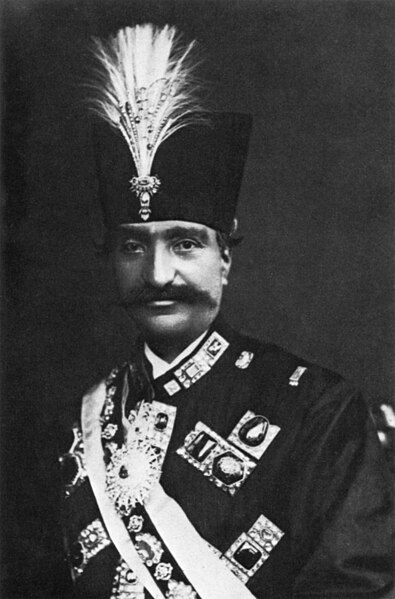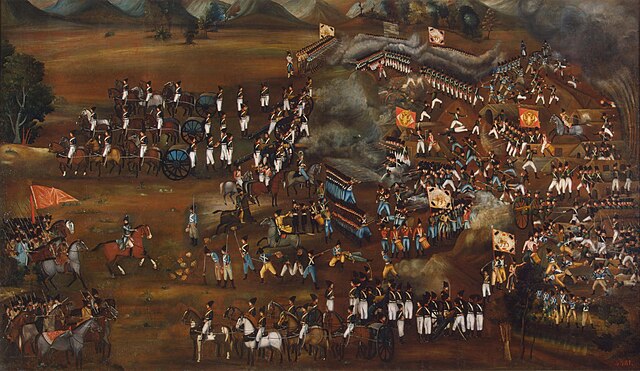Naser al-Din Shah Qajar was the fourth Shah of Qajar Iran from 5 September 1848 to 1 May 1896 when he was assassinated. He was the son of Mohammad Shah Qajar and Malek Jahan Khanom and the third longest reigning monarch in Iranian history after Shapur II of the Sassanid dynasty and Tahmasp I of the Safavid dynasty. Nasser al-Din Shah had sovereign power for close to 51 years.
Naser al-Din Shah, photographed by Nadar in 1889
Naser al-Din Shah by Abul Hasan Ghaffari, 1859
Naser al-Din Shah Qajar, King of Persia. Photography by Nadar in 1881
The Shah on his European tour, seated with British and Russian royalty in the Royal Albert Hall, London
Qajar Iran, also referred to as Qajar Persia, the Qajar Empire, Sublime State of Persia, officially the Sublime State of Iran and also known as the Guarded Domains of Iran, was an Iranian state ruled by the Qajar dynasty, which was of Turkic origin, specifically from the Qajar tribe, from 1789 to 1925. The Qajar family took full control of Iran in 1794, deposing Lotf 'Ali Khan, the last Shah of the Zand dynasty, and re-asserted Iranian sovereignty over large parts of the Caucasus. In 1796, Agha Mohammad Khan Qajar seized Mashhad with ease, putting an end to the Afsharid dynasty. He was formally crowned as Shah after his punitive campaign against Iran's Georgian subjects.
Battle of Sultanabad, 13 February 1812. State Hermitage Museum.
Storming of Lankaran, 13 January 1813. Franz Roubaud.
Battle of Ganja, 1826. Franz Roubaud. Part of the collection of the Museum for History, Baku.
A. Sharlmann "Battle of Ganja" during the Russo-Persian War (1804–1813)








